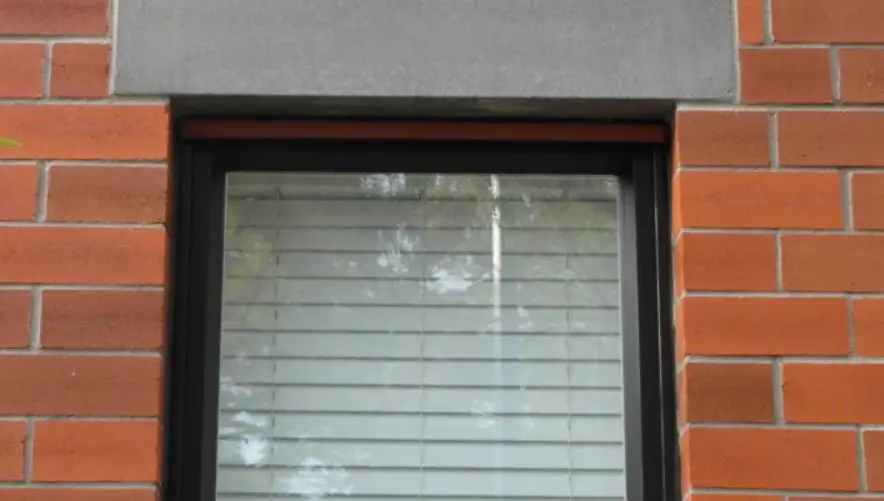Last Updated on October 4, 2022
What is a lintel used in construction?
A lintel is a beam that is used to support the weight of masonry above an opening. In construction, lintels are commonly used above door and window openings. They are also used for supporting some structural members of roofs. There are several different types of lintels that can be used in construction, depending on the application.
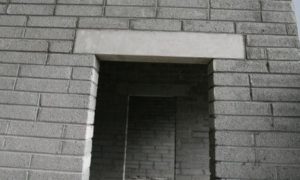
Lintels are typically made of timber, steel, brick or concrete and is placed across the top of a window or door opening to provide structural support. Lintels help to distribute the weight of the roof and walls above the opening and prevent them from collapsing. They also help to keep the wall from bowing outwards and prevent water from seeping into the building. In addition, lintels can provide additional stiffness to a frame, helping to resist wind and seismic forces. As a result, lintels play an essential role in the safety and stability of a building. When choosing a lintel, it is important to consider the weight of the materials that will be placed on it, as well as the span of the opening.
As a result, lintels are an essential component of any load-bearing wall construction. In this blog post, we will discuss the different types of lintels by their shape and design.
What are the types of lintels in construction?
There are several different types of lintels that can be used in construction, each with its own advantages and disadvantages. The most common types of lintels are timber, steel, and concrete. Wooden lintels are the cheapest option, but they are also the least durable and can be damaged by moisture. Steel lintels are more expensive, but they offer superior strength and durability. Concrete lintels can be an expensive option, but they are also highly durable and resistant to damage.
1. Timber Lintel
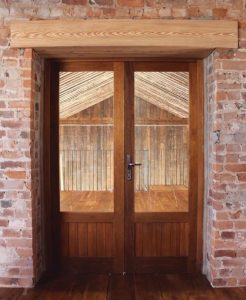
Timber lintels are a common component in the construction of buildings. Timber may be an ideal material for lintels (usually in small structures where high load-bearing capacity isn’t required) due to its relative strength and durability. Timber lintels can be used in a variety of applications, including window and door openings, as well as bearing walls. Timber lintels are also an eco-friendly option, as they are made from a renewable resource. Timber lintels must be properly installed in order to provide adequate support for the load they are carrying. They should also be treated with a waterproofing agent to protect them from moisture damage. When installed correctly, timber lintels can provide years of trouble-free service.
2. Steel Lintel
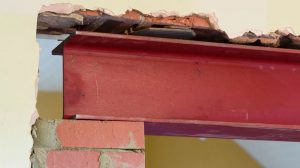
Steel lintels are one of the most important elements in construction, providing support for masonry walls and bearing the weight of the structure above. Steel lintels are typically made from rolled steel, which is then cut to size and welded or bolted into place. Steel lintels can also be cast from molten steel, although this is less common. Steel lintels are incredibly strong and durable, able to support immense weights. They are also relatively easy to install, making them a popular choice for construction projects. Steel lintels provide an essential function in construction, and as a result, they are an important part of any builder’s toolkit.
3. Stone Lintel

Stone lintels are also one of the most important parts of any stone structure. They help to support the weight of the stones above and keep the walls from collapsing. Lintels are also used to add decorative elements to buildings. Stone lintels come in a variety of shapes and sizes, and they can be made from different types of stone. The most common type of stone lintel is the sandstone lintel, which is used in many ancient buildings. Stone lintels are also used in modern construction, and they can be made from any type of stone.
4. Brick Lintel
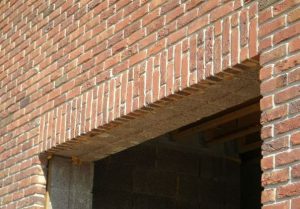
Brick lintels are an important structural element in many types of construction. They are typically used to support the weight of a brick wall above an opening, such as a window or door. Brick lintels are available in a variety of sizes and shapes, and they can be made from different materials, including concrete and stone. Brick lintels are typically installed during the construction process, and they must be properly supported in order to function properly. In some cases, brick lintels may also be used for decorative purposes.
5. Reinforced Brick Lintel
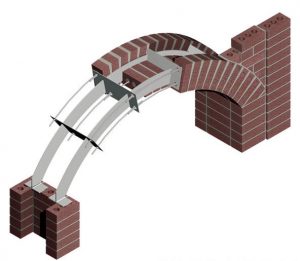
Reinforced brick lintels are an important structural element in construction. They are used to support loads that exceed the capacity of a conventional brick lintel. Reinforced brick lintels are made by reinforcing a conventional brick lintel with steel or other reinforcement. The reinforcement increases the load-bearing capacity of the lintel, making it suitable for supporting heavier loads. Reinforced brick lintels are available in a variety of sizes and shapes, and can be custom-designed to meet the specific needs of a project. Typically, Reinforced brick lintels are used in load-bearing walls, floors, and ceilings. They are also used in non-load-bearing walls to provide support for cladding and other finishes. Reinforced brick lintels are an essential element of many construction projects, and their use can help to ensure the safety and integrity of a building.
6. Reinforced Cement Concrete Lintel (RCC Lintel)
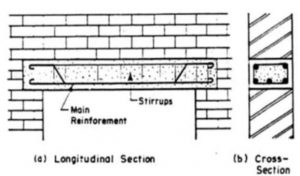
RCC lintels are reinforced concrete lintels that are used in construction. RCC lintel is an important structural element in bridges and buildings. RCC lintel is placed over the doorways and windows to support the weight of the load above it. It is also used in the construction of shelves, roofs, and ceilings. It is generally made up of steel bars that are placed in a wooden frame. The steel bars are welded together and then the wooden frame is filled with concrete. The RCC lintel is then placed in the desired location and allowed to cure for 24 hours. After the curing process, it is then ready to be used in construction. RCC lintel has many benefits over other types of lintels. It is more durable and has a higher load-bearing capacity than other types of lintels. RCC lintel is also less likely to crack under stress. It is an essential part of any construction project and should be chosen for its durability and strength.
Difference between Lintels and Beams
Lintels and beams are two types of support structures that are commonly used in construction. The main difference between lintels and beams is that lintels are typically used to support smaller loads over shorter spans, while beams are used to support larger loads over longer spans. As a result, lintels are usually made from lighter materials, such as wood or aluminum, while beams are typically made from heavier materials, such as steel or concrete. In addition, lintels are typically placed above doors and windows, while beams are often used as roof trusses or to support floors and ceilings. While both lintels and beams play an important role in the stability of a structure, it is important to choose the right type of support for the specific application.
Installation of Lintels
Although the installation process of lintels depends on the type of the lintel and structure, we can provide a common method for it. Installation of lintels is a critical step in the construction projects. The first step in installation is to mark the location of the lintel on the wall. Once the lintel is in place, it is secured with brackets or by bolting it to the wall. The next step is to install the bricks or blocks that will rest on top of the lintel. Depending on the type of block being used, this can be done by either stacking them on top of each other or by laying them in mortar. Finally, mortar is used to fill in any gaps around the lintel and to secure it in place. Installation of lintels may seem like a simple task, but it is essential to ensuring the safety and stability of a structure.
What is the term “post and lintel construction” ?

Post and lintel construction is one of the most ancient types of architecture, dating back to prehistoric times. In this type of construction, vertical posts (columns) are used to support a horizontal lintel, creating an opening that can be used for windows, doors, or other purposes. Post and lintel construction is simple but effective, and it has been used in a wide variety of buildings throughout history. One of the most famous examples of post and lintel architecture is Stonehenge, a prehistoric monument in England. Today, post and lintel construction is still used in many modern buildings. While it is not as common as other types of construction, it can be seen in a variety of different settings, from office buildings to homes.
Decorative Lintels
Decorative lintels are a type of architectural element that is typically used to support the weight of a structure above an opening, such as a window or door. They are often made from materials like stone, brick, or metal, and can be ornately carved or simple in design. Decorative lintels can add both visual interest and structural support to a building, and are often used in historic renovation projects. In some cases, decorative lintels may also be load-bearing, meaning that they help to distribute the weight of the structure evenly across the opening. When selecting decorative lintels for a project, it is important to consider both the function and the aesthetics of the element.
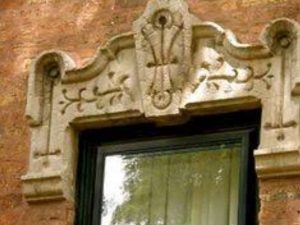
In other words, decorative lintels are a popular architectural feature that can add a touch of elegance to any home. They can be very effective for adding visual interest to a structure like a parapet wall does. In addition to their aesthetic value, decorative lintels can also help to support the weight of heavy objects above door and window openings. As a result, they play an important role in both the function and the style of a home. Whether you are looking to add a touch of class to your doorways or you need some extra support for your windows, decorative lintels can be a great solution.
Lintel Design by Shape
Lintel design is an important factor to consider when constructing a building. It is important to choose a lintel design that is appropriate for the specific load-bearing requirements of the project. There are a variety of lintel designs to choose from, and each has its own advantages and disadvantages. Some common lintel designs include the flat lintels, arch lintels, and corbeled lintels. The most appropriate design will depend on the specific needs of the project. Lintel design is a critical consideration in any construction project, and it is important to consult with a qualified engineer to ensure that the chosen design is appropriate for the intended application.
1. Flat Lintels
Flat lintels are a popular choice for both new build and renovation projects due to their simple design and durability. When choosing a flat lintel, it is important to consider the load bearing capacity and deflection requirements of the project. Flat lintels are an ideal solution for many applications, and with the right choice can provide a robust and long-lasting support.
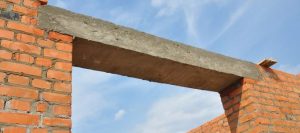
Flat lintels are often used in conjunction with other types of lintels, such as arch lintels, to create an aesthetically pleasing appearance. One advantage of flat lintels is that they can be easily decorated with carved designs or inscription; another advantage is that they are less likely to crack under load than other types of lintels. Flat lintels also have the advantage of being relatively easy to construct.
2. Arch Lintels

Arch lintels are an important structural element in architecture. They are often decorated with ornate carvings or reliefs, and they can be an important part of the overall design of a building. In addition to their aesthetic value, arch lintels also serve an important functional role by supporting the weight of the structure above and providing stability. Arch lintels are a key element in many types of architecture, from ancient Roman buildings to modern-day skyscrapers.
3. Corbeled Lintels
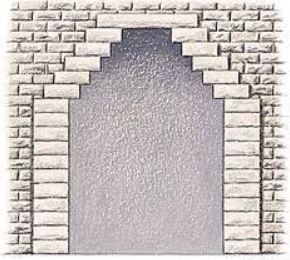
Corbeled lintels are a type of architectural element that is commonly used in the construction of doorways and windows. The lintel is supported by a series of corbels, which are projecting stones that are layered on top of each other. Corbeled lintels are often used in traditional architecture, as they provide additional support for the lintel while also adding aesthetic appeal to the building. In addition to their use in doorways and windows, corbeled lintels can also be used to support roofs, porches, and balconies. Corbeled lintels are a versatile and popular choice for many architects and builders.
Lintels in construction have been explained in this article. Hope you enjoyed it!

